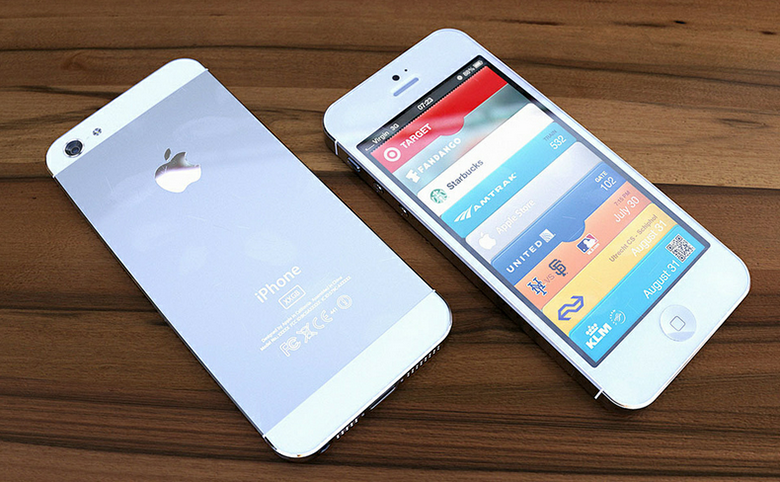
Windows Phone 8
The keystone feature of Windows Phone 8 is that, like Windows Phone 7/7.5, it’s unapologetically different. But unlike Windows Phone 7/7.5, Windows Phone 8 grants the user control over the sizes of his live tiles. Symbolically, it is these tiles that are the main point of differentiation between Windows Phone and the other platforms. By extending the functionality of this keystone feature, Microsoft has further carved its uniqueness into the platform. As such, Windows Phone 8 continues to be the anti-iOS and the anti-Android.The many other improvements to Windows Phone 8, such as the improved browser, Skype integration, and support for multi-core CPUs and higher-resolution displays, are features aimed to continue the momentum of the platform, but not necessarily accelerate its market share. Most of the new features of Windows Phone 8 are iterative, and not breakthrough.

The problem with Windows Phone is that not enough people know it exists. With the highest customer satisfaction of all smartphone platform, logic holds that if Microsoft can position this product in front of more eyeballs (and continue to improve the platform, even if only in iterative ways), many more people will choose Windows Phone. But the smartphone space is noisy with a new Android released almost every week, and a benchmark iPhone coming out every fall. If Microsoft can make the same noise with its hardware partners, and with a possible upcoming Nokia Lumia with PureView technology and a high-end Galaxy S III-like Windows Phone coming from Samsung, Windows Phone could win.
There’s a bit of a caveat here. Microsoft’s recent move to wall-off all existing hardware from Windows Phone 8 will have a dramatic and lasting impact on the platform. It’s a factor that might cannibalize on Windows Phone 8 device sales. Why? Because if I, for example, am looking to spend $200 on the new Lumia, I’m going to have a low degree of convince that my investment will get the next major update of Windows Phone. And that’s a really big deal. If I buy an iPhone, I’m guaranteed at least one major software update. If I buy and Android, I’m almost guaranteed an update, and if I want it faster, I can visit sites like XDA. But buying a Windows Phone is somewhat of a crap-shoot because there is no certainty that my new Lumia will get the Windows Phone 9 update.
Android 4.1
Previous to the release of Android 4.1, Android had a really big problem. It was laggy. It’s possible that the vast majority of Android users didn’t pinpoint this fault, but even without knowing it, lagginess causes frustration and discontent. It makes for a bad experience.Project Butter is one of the most impactful and important features to come to Android in a long time. Not only does it magically transform the experience of any Android phone (whether new or old), but it helps Android’s promise of being a techy-do-it-all-yet-beautiful operating system come to fruition. It has done wonders, even in early form, to the HTC One X, and the Samsung Galaxy S III, Galaxy Note, Galaxy Nexus, and Galaxy S II. With Jelly Bean, Android truly becomes a no-compromise operating system. You can now add widgets and graphics to your homescreens and download as many apps as you want without fear of slowing down the OS. With Jelly Bean, the interface operates at a higher framerate. When you touch the screen, the CPU cores go to maximize clock speed for several seconds. This stuff is built deep into the operating system. A user can’t mess this it up by installing too many widgets. The lag is gone.
iOS 6
To end-users, iOS 6 is yet another marginal upgrade from Apple that keeps the interface stubbornly the same. Even the most devout Apple users are bored of iOS’s row-after-row of icons. Dissecting iOS 6 to its cornerstone parts, all new features (except maybe Passbook) are predictable iterations: Maps is redone with turn-by-turn navigation (finally!), Siri can do more (duh!), FaceTime is possible over cellular data (took long enough!), Facebook is integrated as tightly as Twitter (Android and Windows Phone have done this for years), and so forth.The saving grace for iOS 6 will be hardware. With the iPhone 5 coming very soon, and a rumored iPad mini not too far behind, Apple will have a chance to show us innovation through their highly-regarded industrial design.

And alas, let us not forget that Apple has been known to hold back certain features until the announcement of the corresponding hardware. For example, Siri was not included in the iOS 5 beta last year. Rather, it later debuted at the iPhone 4S announcement. It’s possible that come next month when the iPhone 5 is announced, we’ll get new features along with it that aren’t in the current iOS 6 beta.
So Which Got it Right?
If you strictly look at how these three operating systems have evolved in 2012, it is Windows Phone and especially Android that has gotten right. In the former case, Microsoft has made a good thing even better. They have massaged and improved their key point of differentiation. In the latter case, Google has taken the beautiful holographic UI first shown in Honeycomb and perfected in Ice Cream Sandwich, and they’ve made some dramatic changes to give the user a satisfying feeling of speed and responsiveness in Jelly Bean.It is iOS 6 that did not get it right. It’ll be a great operating system, just as all previous iterations of iOS were. But it’s unlikely to thrill, appease, and amaze users, unless there’s some super-impressive (perhaps unanticipated) hardware coming from Apple, or some unanticipated software features.
What do you think? Which got it right?





No comments:
Post a Comment